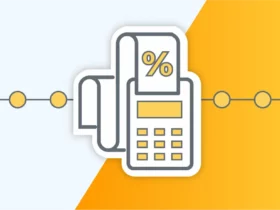Have you looked at the employee schedule lately? Poor employee scheduling hurts your business as it decreases employee and customer satisfaction.
The Covid 19 pandemic brought significant changes to how organizations manage their workforce. With a section of the employees working remotely, employee scheduling has become more complicated.
Fortunately, employee scheduling software allows business owners to manage their workforce effectively.
Benefits of Effective Employee Scheduling
You need to understand the benefits of using employee scheduling software to manage your workforce.
- Enhancing organizational profitability by reducing overstaffing and minimizing administrative costs.
- Ensuring high-quality customer service.
- Maintaining high employee satisfaction and loyalty.
- Ensuring compliance with labor laws because all your workforce-related rules and policies are applied consistently with automation.
Features of a Workforce Scheduler
The Kronos workforce scheduler allows you to control the labor utilization in your organization using the following features.
- Call List. This allows the management to list the most suitable employees to fill a role based on organizational policies and employee preferences. Managers can communicate with these employees through direct calls or text messages to the employee devices.
- Workload Generator. This feature sheds light on your impending workload for multiple jobs, which will help you to meet demand according to your business drivers.
- Mobile Scheduling. The workforce scheduling feature allows you to send a text message informing the available workforce of a shift. When the individuals respond, the workforce scheduler assigns tasks to the employees who meet the configurable requirements.
- Assignment Transfer. This feature helps the management to understand the areas having over coverage while requesting a transfer to the areas with under coverage.
- Employee Self-service. The workforce scheduler allows an easier employee self-service that is easy to operate as employees can see everything they need on a single screen.
How to Schedule Employees Effectively
Now that you understand the need for employee scheduling, let’s look at the simple process of getting started on smarter scheduling for your employees.
Establish What Your Team Needs to Do
If you are seeking to utilize the Kronos workforce scheduler, you must first understand the team’s needs.
First, you must understand what an employee with a certain role is expected to do within a certain period. This process should be done for every job role within your organization.
Next, you need to specify the tasks associated with every job role. Note that these tasks will differ depending on the type of business you operate.
Establish the Time When you are Busiest
Before using the Kronos employee training for scheduling, you must determine your current activity-how busy you are on certain days.
This will help you determine your staff level needs, making it easy to determine the right amount of staff to schedule throughout your operating hours.
Intuition may lie to you that you don’t need scheduling software since you know your business better, don’t fall for this trap. Your intuition may be wrong and lead you to develop less than optimal schedules, leading to overstaffing and understaffing in some areas.
The most effective approach to making smarter schedules requires looking at data from sales and labor reports. For instance, sales reports can pinpoint the busy times for the organization, making it possible to determine the specific shifts requiring more staff and vice versa.
Consider the Needs of Your Staff
The next step in using the Kronos employee training for scheduling software is to balance the need for an optimized schedule against the needs of your employees.
You must ensure that you match shifts with the right staff, allocate a fair amount of shifts to employees, define roles clearly to avoid confusion, provide advance notice of shift changes, and allow employees to switch shifts easily.
Effective scheduling also requires you to plan for contingencies. Last-minute shift swaps and absenteeism are common issues you will encounter.
Predict the Future Activity Levels
Effective planning with the Kronos employee training for scheduling also requires you to determine future activity levels using the current activity levels.
This will require you to consider daily, monthly, quarterly, and yearly sales cycles.
Data could show you that certain periods are busier than others, helping you to predict with certainty that these patterns will repeat themselves and therefore plan accordingly.
With information about the current activity of the firm, you get a clearer picture of the amount of staff needed for your firm.
Bear in mind that some employees are more productive than others. Although you don’t want to overwork them, you could consider fewer shifts when they are at work.
Keep an Eye on Overtime
While using the Kronos employee training for scheduling software, adherence to labor laws and policies is necessary. These laws pertain to organizational processes which must comply.
For instance, when allocating overtime, consider that the Federal Law requires employers to pay nonexempt employees at a rate that is 1.5 higher than the normal pay for overtime.
You must also be careful while allocating overtime, as it could lead to reduced productivity if allocated for long periods.
Provide Enough Time Off Between Shifts
Safety-sensitive positions require you to provide employees with enough rest between shifts. Again, here you need to understand the Federal and state laws concerning employee safety.
Some laws restrict the maximum number of hours employees in certain positions can work.
Post Schedules in Advance
Working with Kronos employee training for scheduling software requires you to provide employees with a comfortable working environment to enhance productivity.
Give your employees enough time to plan for appointments and commitments around their work schedules.
If extra hours become available, you need to make these changes to the schedule so that you don’t inconvenience employees.
Conclusion
Smarter scheduling can be beneficial to both your employees and customers.
You might be the old-school type that thinks that intuition could help you plan effective schedules because you understand your organization better.
With technology, you need to understand that you can plan schedules effectively by understanding your employees’ needs and predicting future activity levels.
This way, it becomes possible to understand your organizational staffing needs and assign tasks accordingly.













